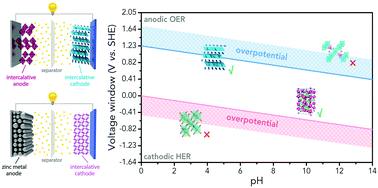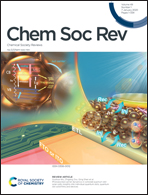Voltage issue of aqueous rechargeable metal-ion batteries
Abstract
Over the past two decades, a series of aqueous rechargeable metal-ion batteries (ARMBs) have been developed, aiming at improving safety, environmental friendliness and cost-efficiency in fields of consumer electronics, electric vehicles and grid-scale energy storage. However, the notable gap between ARMBs and their organic counterparts in energy density directly hinders their practical applications, making it difficult to replace current widely-used organic lithium-ion batteries. Basically, this huge gap in energy density originates from cell voltage, as the narrow electrochemical stability window of aqueous electrolytes substantially confines the choice of electrode materials. This review highlights various ARMBs with focuses on their voltage characteristics and strategies that can effectively raise battery voltage. It begins with the discussion on the fundamental factor that limits the voltage of ARMBs, i.e., electrochemical stability window of aqueous electrolytes, which decides the maximum-allowed potential difference between cathode and anode. The following section introduces various ARMB systems and compares their voltage characteristics in midpoint voltage and plateau voltage, in relation to respective electrode materials. Subsequently, various strategies paving the way to high-voltage ARMBs are summarized, with corresponding advancements highlighted. The final section presents potential directions for further improvements and future perspectives of this thriving field.



 Please wait while we load your content...
Please wait while we load your content...